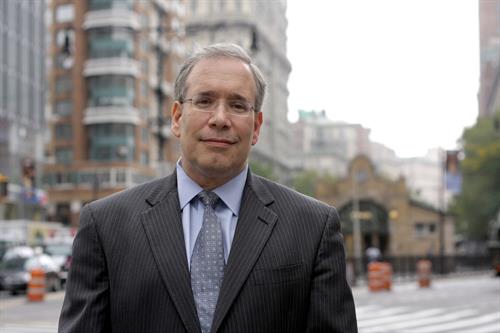
TESTIMONY OF NEW YORK CITY COMPTROLLER SCOTT M. STRINGER BEFORE MEMBERS OF THE COMMITTEE ON HOUSING AND BUILDINGS OF THE NEW YORK CITY COUNCIL
January 20, 2015Thank you, Chairperson Williams, for holding this oversight hearing today on an issue of great importance to our city: short term rentals and their effect on our neighborhoods.
Despite strict laws barring rentals of apartments for fewer than 30 days, the short-term rental market has proliferated in recent years, as web-based platforms like Airbnb, FlipKey, and Homeaway have made it easier than ever for tenants and landlords to rent their units to tourists and others.
This growing trend poses concerns for the City of New York—in particular, for our affordable housing stock and public safety.
While the companies have argued that the majority of users rent out their primary residence for short durations during the year, Airbnb in the City, a report issued by Attorney General Eric Schneiderman in October highlights how many landlords are using these platforms to transform units that should be on the rental market to fly-by-night hotels. 1
The Attorney General’s report found that from January 2010 to June 2014, six percent of Airbnb hosts dominated the platform, with some offering hundreds of unique units. These “Commercial Users” accounted for 36 percent of private short-term bookings and 37 percent of all host revenue.
The Attorney General also found that in 2013, more than 4,600 units were booked as short-term rentals through Airbnb for three months of the year or more, with nearly 2,000 booked for a cumulative total of six months or more. These units were effectively removed for practical use in the New York City housing market.
While there are 3.3 million housing units in the City of New York, the fact remains that we need every unit we can get to combat rapidly rising rents. As my office showed last year 2, between 2000-2012:
- Median apartment rents in New York City rose by 75 percent, compared to 44 percent in the rest of the country. Over the same period, real incomes of New Yorkers declined as the nation struggled to emerge from two recessions.
- Housing affordability, as defined by rent-to-income ratios, decreased for renters in every income group, with the harshest consequences for poor and working class New Yorkers earning less than $40,000 a year. In 2000, renters earning $20,000 or less were dedicating an average of 50 percent of their income to rental costs. Twelve years later, that average jumped to an untenable 67 percent, or more than two-thirds of household pay.
- New York lost an astonishing 400,000 apartments renting for $1,000 or less. In some neighborhoods – among them Williamsburg, Greenpoint and Fort Greene in Brooklyn, as well as large sections of Harlem – average rents doubled over the 12-year period.
Unlike hotels, which must submit a fire safety and evacuation plan to the FDNY 3, apartments being illegally used as short-term rentals are under no such requirement and generally do not offer visitors access to such plans.
In the end, the philosophy behind the multiple dwelling law is to protect
tenants from the inconvenience of hotel-type occupancy in their buildings,
ensure compliance with fire and safety codes, and preserve the supply
of affordable permanent housing.
4
These goals are the foundation of short-term rental policy in the City
of New York.
Thank you.
1
http://www.ag.ny.gov/pdfs/Airbnb%20report.pdf.
2
http://comptroller.nyc.gov/wp-content/uploads/documents/Growing_Gap.pdf.
3
http://www.nyc.gov/html/fdny/pdf/fire_prevention/fsp_info/a_hotel_fire_safety_and_evacuation_plan_instructions.pdf.
4 See New York State Assembly Memorandum in Support of Legislation (S. 6873-B,
233rd Leg. (N.Y. 2010 (Sponsor’s Memo) Bill No. A10008).
